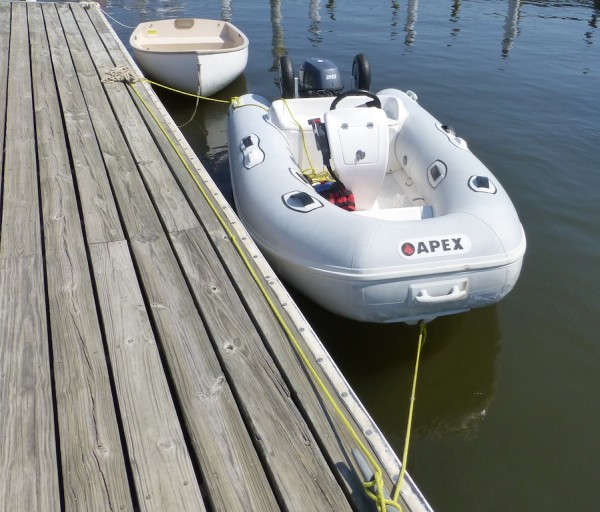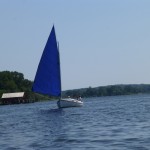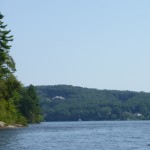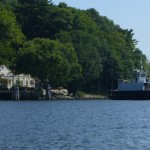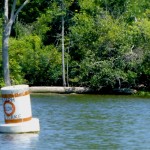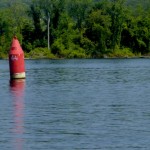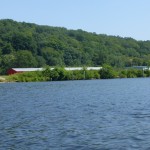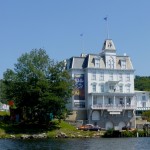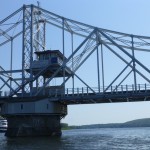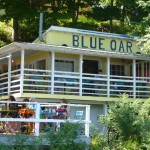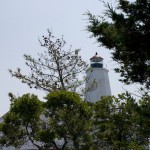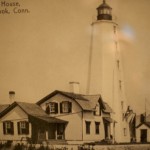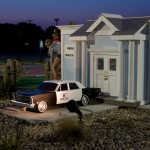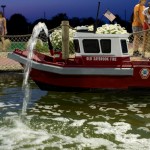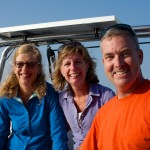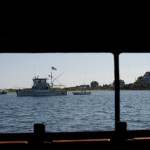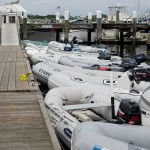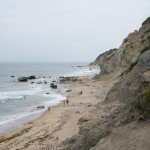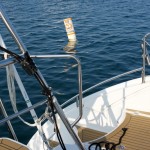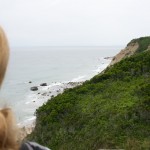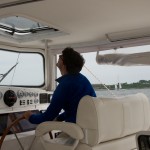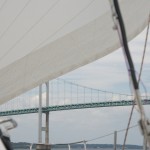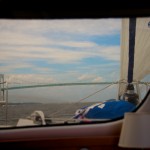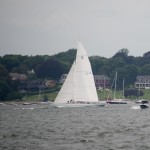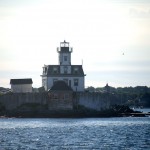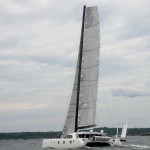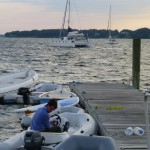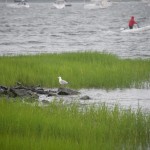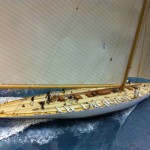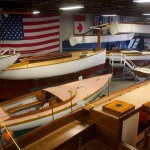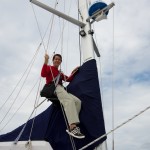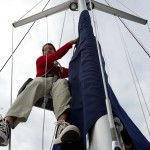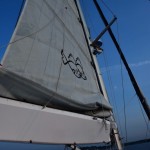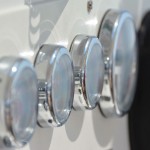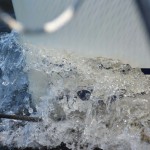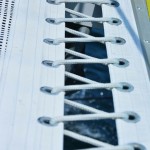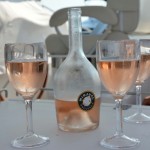A friend refers to boaters who spend significant time in marinas as “trailer park specialists”. After staying at a few marinas, we consider this to be a harsh and unfounded review. After a few weeks in Port Washington solving our engine cooling engine issue, we have learned the pros and cons of marina life. We stayed at the very pleasant Manhasset Bay Marina; the associated restaurant, Lamottas, filled our bellies more than once when the Two Fish galley was declared closed.
The first thing we realized about Northeastern Marinas is that many of the liveaboards have jobs. People with jobs are a rarity when cruising the Caribbean. Working liveaboards have many challenges that we do not face. How to get to work each day. How to keep your suit from being wrinkled. Since they do not get to move their boats often, they focus less on fixing their running rigging and more on optimizing their water and power hook-ups in ingenious ways. When Arthur (the Hurricane) was approaching, I spent plenty of time adjusting Two Fish’s tie-down system but the veteran liveaboards did not flinch. They probably had not untied since the last big blow. [Tie down tips. If you plan to test your engines at the dock while tied down make sure you are up to date on your insurance, the cleats are strong, and that multiple lines are doing the same job so as to spread out the load ] Liveaboards use bubblers to keep the hull from freezing in the winter. They also get involved in Marina life by adding services or butting heads with management. So don’t fall into the labeling trap – look at their lives through a different lens.
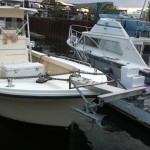
Odd dual anchor
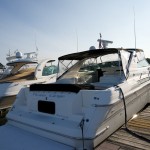
100 gallons per hr
This is an oddity I discovered in our marina. It is a runabout which had dual anchors led back to the helm. I was impressed that the owner had rigged this complex set-up and would have loved to have witnessed it in action. The local marine shop must have rolled their eyes when the owner came in to buy all the parts. I also learned how much fuel motor yachts consume. A nearby boat (right hand side) was owned by a very friendly family. The captain (also Dad) told me that they burned 100 gallons of diesel per hour. A simple 2 hour spin in the boat can cost 1,000 bucks! Wow, Two Fish burned about 60 gallons on her last 1,100 mile trip.
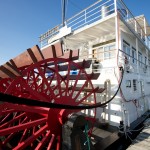
Powered by Paddle Wheel

3 Story boat
At the end of our dock in Port Washington, there was a 70 foot replica of a paddle wheel riverboat. It was built in the 80’s for some rich guy. The current owner does the sound and lighting for a popular Broadway show. He moves the boat every year. The paddle wheel has much more square footage than an average home. She has been in the open ocean once when coming up from Baltimore. Theocean trip was done with much trepidation and the utmost care for the weather as large waves would easy come over her low freeboard.
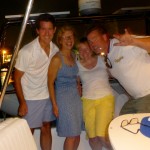
Lars and Alison
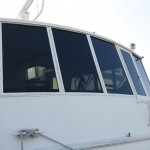
Stairmaster for exercise
We made fast friends with our liveaboard neighbors. They had a full size stairmaster and rowing machine aboard. I still can not understand how the stairmaster does not topple over in big waves while underway. Our neighbors leave the dock about six times a year.
-
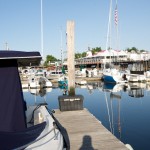
-
Marina Restaurant
-
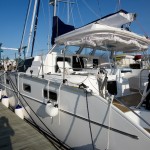
-
Our inflatable step is a must
-
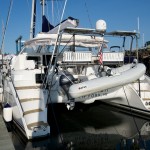
-
Two Fish sheltered spot
When we finally got the engines running, the grass on the sugar scoop indicated we were overdue for a passage. We did a short hop across the sound to Westport, Connecticut. During the early part of the trip we passed Execution Rocks, which are allegedly named after cruelties committed by the British during the Revolutionary War. The poor patriots were chained to the rocks at low tide and killed by the rising waters. Not sure whether it is true, but the story gets my patriotism boiling.

Execution Rocks
Some photos from the cross-sound trip. Taking photos from aboard is very tricky. The vistas are huge and you are trapped aboard. I need some photo tips!
-
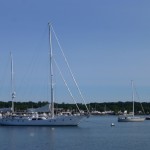
-
Classic Yacht
-
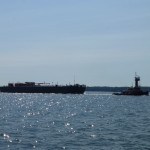
-
Long Island Sound Traffic
-
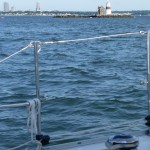
-
Execution Rocks
-

-
Water front home
Westport is a town we knew from “our old life” and it was a treat, as always, to have some visitors stop by.
-
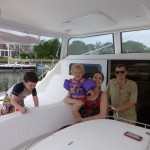
-
Work friends
-
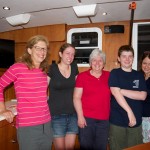
-
Cornell friends
-
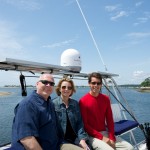
-
Work friends
-
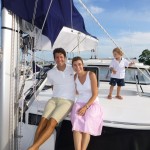
-
More work friends
-
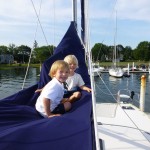
-
Cute kids
-

-
Sailing friends
-
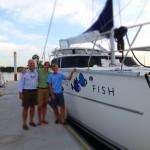
-
Is he trying to steal Two Fish?
